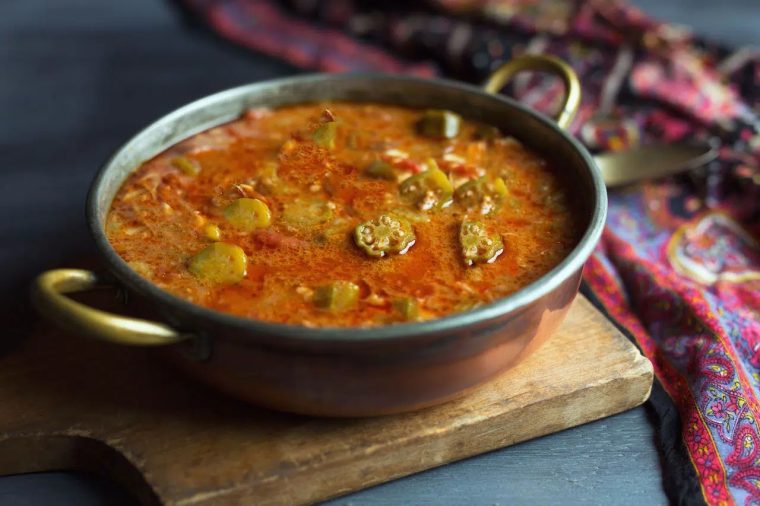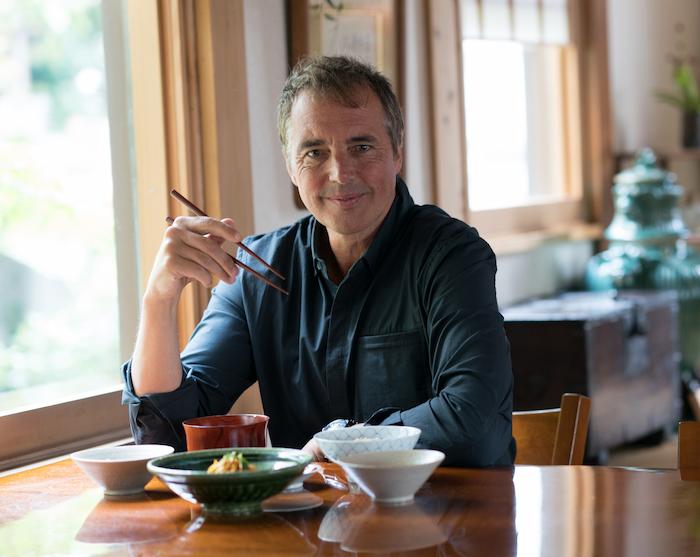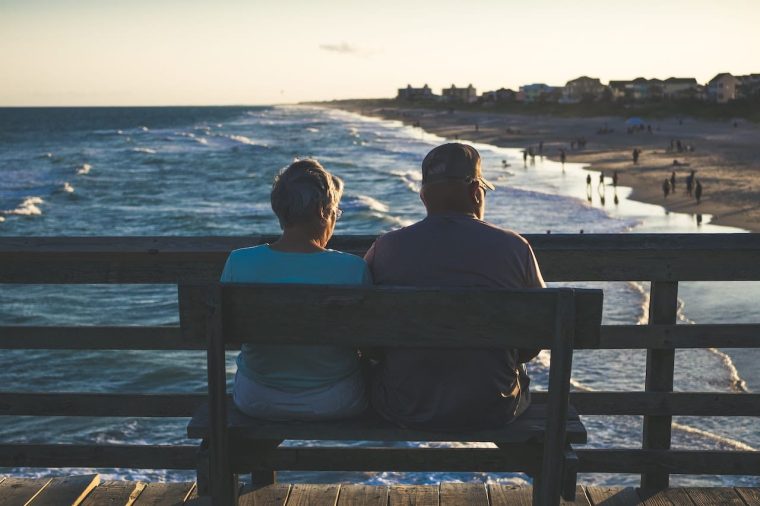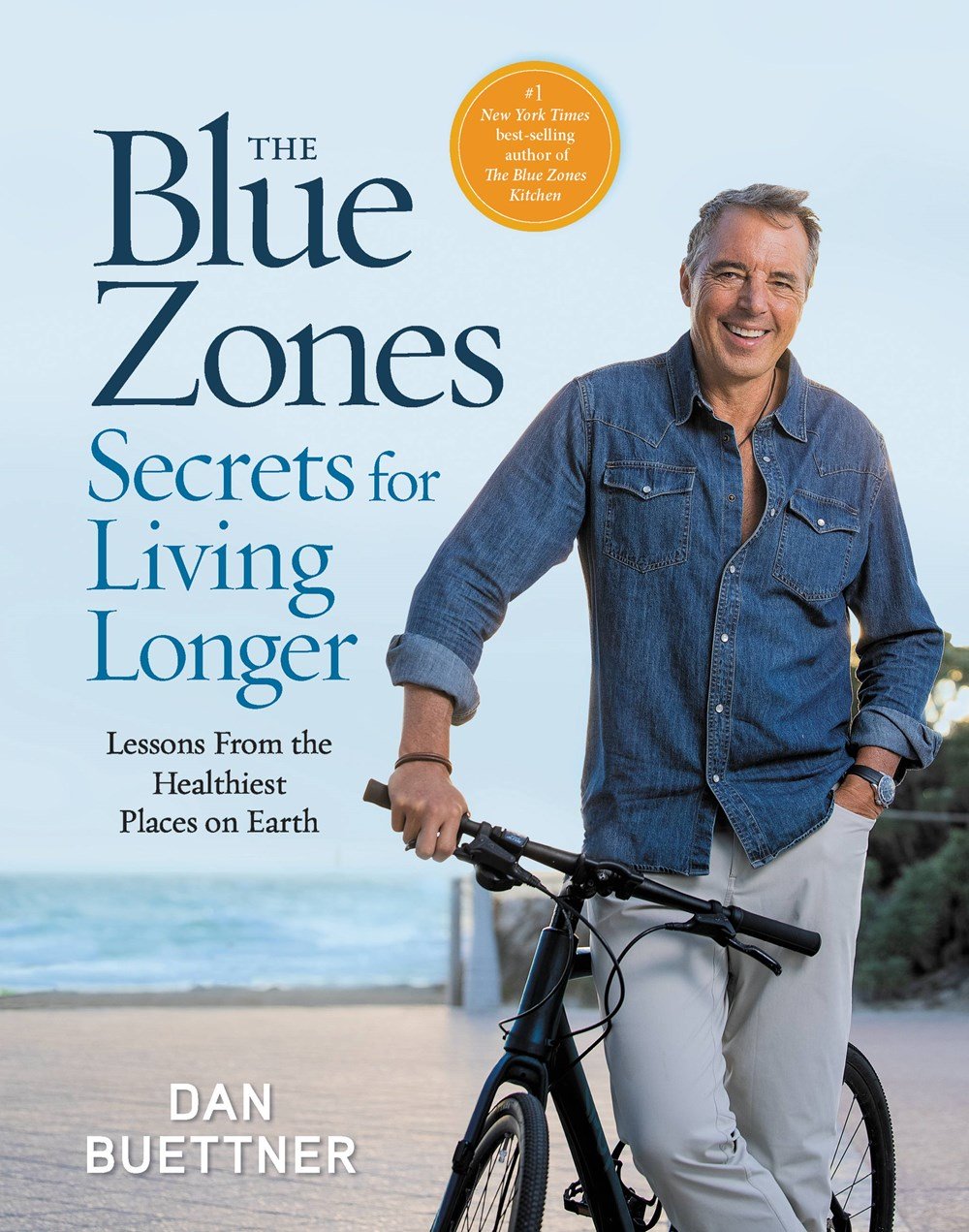Without complaining whatsoever, I must say that being a health educator is tricky and challenging. There are a number of reasons for this, but I’ll phrase one of the big ones like so:
We don’t just try to share information. We try to help people negotiate between their brains and their bodies.
No matter the topic—exercise, nutrition, you name it—it’s not usually enough to tell people what to do, even if you also explain why. To do our best work, we have to help people understand how to think constructively about the topic at hand, how to know what’s “normal” or “correct” or “appropriate,” how to manage certain emotional reactions along the way, and so forth. We have to be counselors, coaches, and clerics as much as we are classroom instructors.
Sometimes, a lesson’s underlying message is that perception is reality—that the way you choose to look at or think about something makes a real (i.e. measurable) difference, if not all the difference, in your experience. With lessons like these, it’s important to emphasize “mind over matter” and to gently nudge the audience to think outside of their usual boundaries.
But in other cases, the underlying message is that reality is perception—that our experiences can be directly and logically explained by science, data, and the laws of nature (which tend not to change). With lessons like these, it’s important to draw causal and factual connections for the audience so they can see how the pieces fit together in front of them.
Today’s two main articles draw from each of those traditions. The first article—the start of a series on attitude—is the epitome of “perception is reality.” After that, we have a nice, cozy return to “reality is perception” with a quick talk on spices and how our reluctance to use them makes our food taste bland (shocking, right?).
But first…

We’ve entered the final quarter of the year… and though it’s the most wonderful time of the year, it’s also one of the busiest. If we’re thinking about health and lifestyle changes, we’re particularly likely to kick that can down the road, knowing that New Year’s and its resolutions are right around the corner.
I can appreciate that. For whatever reasons, people really do feel an opportunity to change when a new year begins, and I understand wanting to wait for that feeling before getting started (especially because it’s also a busy season).
But do you want to know why I think most New Year’s resolutions fail? Two words: starting cold. People are comforted by the idea that they don’t have to start until next year, but then they start with zero momentum and they never make it over the first hump.
I think a lot more New Year’s resolutions (particularly health-related resolutions) would succeed with one small and non-intuitive change: a guided orientation period before it all starts. Imagine that, instead of plunging yourself straight into the deep end, you could start your journey with some expert perspective—not just what to do and how to succeed, but how to enjoy what you’re doing and understand it from the inside out.
In simpler terms, people need a running start. And that’s why I created the 7-Day Longevity Reset.
The Reset is a lightweight one-week course designed to help you build a nutritional foundation for the rest of your life. More than anything else, it’s about the environments that sustain the world’s longest-lived people (particularly the environments built around food) and how you can design and maintain them for your own long-term benefit.
The 7-Day Longevity Reset is just $11 and it’s open for the taking all year round (and buyers get lifetime access), but it’s a particularly good primer for anyone pondering a health-related New Year’s resolution. If you want to give yourself a running start in 2024, now’s a perfect time to consider it!

If you’ve followed my work for a while, you’ve probably sensed that the many centenarians I’ve met are remarkable people. Whether you call it spunk or chutzpah or joie de vivre, they have a certain animating spirit that goes beyond “personality.” They have the best sorts of energy and yet, at the center of that energy, there’s an enviable peace.
In other words, these people are not “remarkable” just because of their physical health. They’re also remarkable as people—as folks who seem to have themselves figured out while the rest of us struggle with personhood. You get a palpable feeling around them that life is beautiful, that people are ultimately good, and that everything’s really going to be okay.
The exact formula of their “secret sauce” still eludes me, but I can tell you this much for sure: one of the most important ingredients in their secret sauce is attitude.
I’ll admit: I wish I had a better word, because “attitude” has so many platitudes attached. We all know generally what it is and why it’s important, but discussing “attitude” often feels like we’re breathing the same recycled air over and over again—like nobody’s had anything new to say about it since grade school. Right?
Well, I beg to differ… and that’s why I’m writing this short series!
Today’s first entry will unpack the simple reason why I bother: attitude makes an enormous difference in our health and longevity, and centenarians are living proof of it. Simply put, you don’t see a lot of bad attitudes around the happiest and longest-lived people in the world… and this should be an important clue for us.
I’ll share some specific advice on attitude later in this series. Today, I want to look a bit closer at this concept of “attitude” and take inventory of what you do and don’t see in the attitudes of the world’s centenarians.
First things first: what is attitude, really?
For today’s purposes, I’ll define attitude as “a general feeling you choose to trust despite the risks.” To apply this definition to two of the broadest attitudes in the world: optimists choose to trust in good feelings despite the risk of disappointment, and pessimists choose to trust in bad feelings despite the risk of… well, a different kind of disappointment.
Three important notes here:
1️⃣ There’s no such thing as an impartial, objective, or “perfect” attitude. Nobody sees the world exactly as it is. Fortunately, your choice of attitude was never really about reality and facts; it’s about you and how you prefer to construct meaning from experience.
2️⃣ Attitude is largely a matter of opinion (albeit a deeper sort of opinion). Darwin might say that no attitude is inherently right or wrong—that humankind exhibits such a wide range of attitudes because each of them, under certain circumstances, can be useful for our survival.
3️⃣ People can choose their attitudes, but their attitudes can also choose themselves. Though we couldn’t have understood this in grade school, attitude is such an important subject to learn because humans—especially kids without coping skills—can so easily default to attitudes which are childish, egocentric, and (in the bigger picture) self-defeating.
Maintaining a positive attitude can feel like hard work, and you might sometimes wonder if it really makes any difference in the grand scheme of your life. I’m here to tell you: some attitudes are officially better than others when you bother to measure them.
SIDE NOTE re: “Measuring Attitudes”
Many population studies, including those I’ve been involved in, do collect data on their subjects’ attitudes (though “attitude” is more of a layperson’s term than a scientist’s). Researchers are then able to look for correlations between this data and any other data they’ve collected from the same subjects—and in my case, most of that “other data” concerns health and longevity. That’s how this article and I got here!
It probably won’t surprise you to read that, according to the data, people with good (i.e. positive and optimistic) attitudes are happier at any age—that when all else is held equal, a “glass half full” mentality makes people feel better than a “glass half empty” mentality.
But there’s more, because it turns out that a person’s attitude doesn’t just influence how they feel inside their head. There’s a mind-over-matter aspect to attitude; it has a very real influence over a person’s body and physical health and, by extension, longevity. Once again, the folks with good attitudes tend to stay in better physical health and live (considerably) longer than their gloomy peers when all else is held equal.
These conclusions are validated by data, but they feel laughably obvious when you’ve met and interviewed as many centenarians as I have. Within that age group, good attitudes are not just prominent, but ubiquitous. It eventually dawns on you that this is not merely a coincidence shared among centenarians; it’s a consistent and necessary feature of their longevity.
So before we wrap up for today, let’s enumerate some of the hallmarks of “good attitude” seen among centenarians:
Positivity and Optimism ☀️ They have faith in the future; they acknowledge the black clouds but focus on the silver linings
Anticipation ? They consistently have things to be excited about and to look forward to; they never feel listless, adrift, or fully idle
Grace ?️ They don’t dwell or hold grudges, they forgive and move on, they let go of bitterness, and they have an easier time seeing the good in people
Love of Fun ? They embrace the pastimes and hobbies which bring them uncomplicated pleasure and (in many cases) help keep their faculties sharp
Enthusiasm for Life ? They tend to believe that, overall, life is long and easy rather than short and hard
Feeling of Purpose ⛰️ They have a clear sense of service and/or contribution to causes and ideas greater than themselves
By contrast, here are some hallmarks of “bad attitude” which you tend NOT to see among centenarians:
Cynicism, or the tendency to assume worse of people (that nobody is as good as they seem and/or that everyone will inevitably let you down)
Pessimism, or the tendency to assume that bad outcomes are likelier (à la Murphy’s Law) with little confidence in better possibilities
Chronic stress and anxiety, which goes beyond “challenge” (a good thing) and starts warping your view of the world, all while posing real long-term dangers to the body
Bitterness, resentment, and/or regret, all forms of dwelling on the past without being able to change it
Detachment and/or ennui, the feeling of disinterest in the world around you and a vague notion that nothing (you do) matters
Later in this series, I’ll share some of the better attitude advice I’ve encountered in my travels. For now, just try to see the good in things—whatever that means to you—and I’ll catch you next time!

Comedians have observed this irony before, but it never ceases to amuse me: that imperial empires like Britain sailed around the world for countless years in search of spices, then went home and barely used any of them. ?
I assume that some of you like your spice, whether because you grew up with it or because you’ve developed a taste for it. But the historical irony remains: a lot of Western food is still really bland, even though many of us possess worlds of flavor in little jars stashed in our kitchens.
That would be reason enough to return your attention to your spice cabinet. But we’re not just missing out on flavor by neglecting herbs and spices; we’re also depriving ourselves of some of the healthiest and most nutrient-dense ingredients we can possibly eat!
So today, I want to encourage you to use more herbs and spices in your cooking, and I’ll start by addressing the problematic question in our path:
Why are we (collectively) so gun-shy about using herbs and spices? ?
I can think of three legitimate reasons, and I’ll make some important clarifications and reassurances as I go:
1️⃣ We’re (justifiably) scared of lighting ourselves up. No matter your spice tolerance, it’s not usually fun to feel like your sinuses are melting. While you read this, just know that I’m not trying to push you in that direction—that most of the “spices” I’m thinking about aren’t spicy per se.
2️⃣ We’re (rightly) nervous about over-using salt. I probably don’t need to tell you that too much salt is bad for you. Just bear in mind that most of the “spices” I’m thinking of don’t add salt; in fact, many of them can help you to use less salt in your cooking!
3️⃣ We’ve been (correctly) taught that you can always add seasoning, but you can never subtract it. In other words, we’re afraid to over-season our food in any way because we know it’s an irreversible mistake. This is also why we traditionally keep salt and pepper on the table; we err on the side of under-seasoning the food and then allow each person to “correct” for taste.
Sure, there’s some practical wisdom to this way of cooking. But it can also push us to be overly conservative with flavorings of any kind, and (by design) it means we’re cooking for the lowest common denominator of taste. Sounds underwhelming, doesn’t it?
Obviously, there are a great many herbs and spices you might have in your spice cabinet, and their exact nutritional profiles will vary. Having said that, here are some broad strokes about the nutritional value of herbs and spices:
- Virtually all of them are low in calories, particularly in the amounts we’re likely to use—so every benefit following this one comes at a very low energy cost (so low as to be negligible).
- For the most part, herbs and spices don’t contain salt or add it to your food (and most of the exceptions have “salt” in the name). Not only that, but…
- The natural sweetness and/or savoriness in many herbs and spices helps to offset added sugar and salt (respectively) in our cooking. Our tongues like salt and sugar because they enhance the flavors that are already present—so if we put more flavor(s) in our food, we don’t crave them as much!
- Many herbs and spices are loaded with vitamins and minerals such as magnesium, zinc, and iron (of which many Westerners have deficiencies).
- They’re also loaded with antioxidants and flavonoids whose many benefits include improved heart health and reduced blood pressure.
- With these properties taken together, many herbs and spices are helpful for reducing inflammation and relieving the conditions caused by it.
- All of this without even mentioning the individual magic powers that some herbs and spices possess—such as ginger’s power against nausea and garlic’s power against all sorts of nasties (which I covered before).
In summary, herbs and spices have a ton of nutritional upsides AND they make a world of difference in the flavor of food… all with virtually no downsides! ?
I’ve already explained why I think we’ve been holding back, so to wrap things up, I’ll give three pieces of practical advice on using (more) herbs and spices:
1️⃣ Taste the food as you cook. Make no mistake, your nose is extremely helpful for cooking. Still, your nose can’t actually taste things—and this is why any professional cook is likely to sample the food they’re preparing for others. Simply put, it’s the only way to know for sure how things taste. (It’s not a hygiene issue unless the cook is negligent.)
2️⃣ Pick a good recipe and see how it tastes after you get “aggressive” with the herbs and spices. A “good recipe” would be something you enjoy and, ideally, something that tends to come out a little bland (chili and carnitas come to mind as examples).
Anyways, the next time you cook that recipe, deliberately ramp up the amounts of herbs and spices you use—even to the point of doubling or tripling some of them—and see how you like it. I’m betting that you’ll be stunned at how much better the food tastes.
It may sound like a big jump to double the spices, but part of my point here is that, in our fear of “overdoing” them, we barely use them at all. Most of us are due for a correction!
3️⃣ Most herbs and spices have (very) long shelf lives, so find a good supplier and stock up! I’m a fan of Penzey’s Spices, mostly for their quality of product; compared to store-bought spices, Penzey’s is better (sometimes way better) for roughly the same price. I would especially recommend their garlic powder, vanilla extract, and cinnamon options.
If you’re lucky enough to live in a city with a Penzey’s store, you can go smell the difference for yourself. I really do recommend a visit if you have the option, because there’s a special kind of pleasure that washes over you when you walk inside; their stores smell like serotonin and it’s glorious.

Adventist Gumbo
This aromatic gumbo uses the elements of the traditional Creole stew and is bursting with flavor. Full of greens, beans, and herbs, it’s the ultimate Blue Zones meal. Feel free to swap the greens and beans with whatever you have on hand: Spinach, kale, turnip greens, white beans, navy beans, and black-eyed peas all work well in this dish. Since many Adventists don’t eat very spicy foods—in line with traditional church teaching—this gumbo only has a mild kick. If you like yours with a little more spice, add more cayenne pepper or serve it with your favorite hot sauce.
Ingredients
⅓ cup extra-virgin olive oil
⅓ cup all-purpose flour
1 ½ large sweet onions (like Vidalia), chopped
4 garlic cloves, minced
3 bay leaves
¼ teaspoon cayenne pepper
½ teaspoon dried thyme
2 stalks celery, diced
1 red bell pepper, cored and diced
4 cups vegetable stock
⅓ cup fresh or frozen corn kernels
1 ½ cups cooked black-eyed peas (or one 15-ounce can, drained)
1 cup cooked brown rice
1 cup frozen cut okra
2 cups chopped spinach
¼ cup chopped fresh parsley
Salt and pepper (optional)
The Method
- Make your roux: In a large soup pot, heat olive oil over medium heat. Add flour, whisking until smooth. Cook for 3 to 4 minutes, stirring often, and then turn heat down to low and cook for another 3 to 4 minutes, until roux has become golden in color.
- Add onion and turn heat up to medium-low for about 5 minutes. Cook until onion is just soft.
- Add garlic, bay leaves, cayenne pepper, thyme, celery, and red pepper.
- Cover and cook for about 5 minutes over medium heat or until vegetables are tender.
- Stir in vegetable stock, turn the heat up, and bring to a boil.
- Add corn, black-eyed peas, rice, and okra; lower heat to a simmer and cook for about 5 minutes.
- Add spinach and parsley and continue to simmer for another 5 minutes.
- Remove bay leaves and add salt and pepper to taste.
- Serve over rice or with a side of cornbread.






